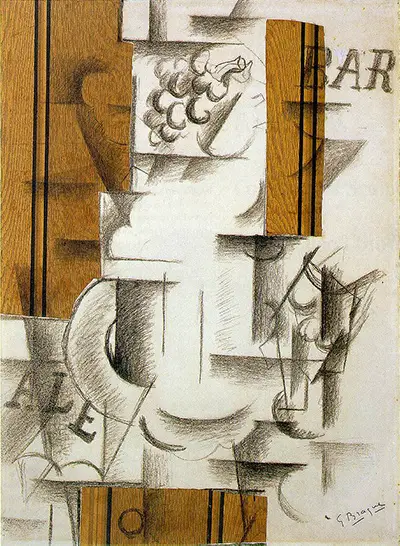There are many notable things about this painting, but one thing that art critics often pick up on as particularly salient about Fruit Dish and Glass is its medium.
Fruit Dish and Glass is the first artwork made with the technique of papier collé, a particular type of collage.
Braque invented papier collé, and in Fruit Dish and Glass he used two different types of paper which he purchased from a stationery store to create a wonderful conjunction of depth (thanks to the simulated oak grain on one type of paper) and two dimensionality (thanks to the fact the Braque never lets us forget that this is an artwork that has been constructed from paper).
Braque is perhaps better known as a Cubist artist, and by the time he produced Fruit Dish and Glass, he had already produced several notable Cubist works (such as 'Head of a Woman').
Indeed, Braque is now credited alongside Picasso as having been essential to the development of the Cubist form.
However, Fruit Dish and Glass is a very important artwork because it reminds us that Braque was so much more than a Cubist painter who worked with the traditional medium of oil on canvas. He was very much concerned with exploring different media and modes of expression.
Fruit Dish and Glass involves paper, wallpaper and lines drawn in charcoal to create a symbolic effect. Though we may be able to pick out the recognisable forms of a fruit dish and a glass, this is somewhat difficult.
Rather than being a purely realistic depiction of its subject matter, Fruit Dish and Glass is something more abstract and playful. Braque seems to be asking us to concentrate on texture and material as much as on the forms he depicts.


